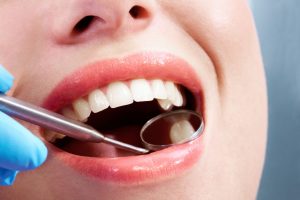There are many ways to lose a tooth, perhaps to an accident, or decay, but the loss of a tooth need no longer be replaced with a bridge or denture, especially as oral implants have become more common. Here, how dental implants Harley Street work is discussed alongside their role in modern restorative dentistry.
Restorative dentistry focuses on returning your teeth to their natural state after receiving some form of damage, no matter how long ago. Perhaps you lost an adult tooth in early adolescence during a sporting event or a minor traffic accident. Although a bridge would have been the standard treatment this is no longer the case.
The simplest analogy for an oral implant is a titanium peg which is inserted into the jawbone, acting as an artificial root. Upon this, a prosthetic tooth similar to a crown is placed. This has not always been the case; the modern oral implant comes in three pieces- the titanium peg (known as the implant), the connecter (which is attached to the top of the implant) and the prosthetic tooth which can be locked into the connecter. The implant is inserted in 2 parts; the first involves fitting the implant into the jawbone, drilling a small hole into the bone. The second part (only performed when the implant is firmly fixed in place by new bone growth) is when the prosthetic tooth is attached to the connector. There is often a 4-6 month gap between the first and second sessions.
If you decide an implant is something you’re interested in you will need to be assessed by a dentist. Performing implantation is not part of standard dental training, but many dentists take further qualifications so that they can perform implants. Any clinic with an implant specialist will be sure to mention it on their website, but it would be wise when booking an appointment to mention your interest in implants, so you will see a dentist who is qualified to advise you further.

This also allows you to talk to the practitioner who may perform the procedure and discuss your personal case. You’ll have to discuss your medical history, any medication you’re currently taking as well as discussing any medical conditions you have, like osteoporosis, which may impact on bone density.
You shouldn’t rush your choice of a suitable dentist, and there will be many factors to consider beyond the obvious ones of cost. How the clinic is equipped and what is the success rate of the dentist? The next biggest determining factor is the skill of the dentist and therefore you should ask about the success rate of the implants they have performed in the past to assess their suitability.
The goal of an implant is to restore and as such the only person who should know which of their teeth are implants is you! With the porcelain on the prosthetic tooth colour matched with the enamel of the surrounding natural teeth, and sculpted to the dimension of the lost tooth, your implant should blend in. One way to check if your dentist can accomplish this is to enquire about their portfolio of previous patients with implants.













